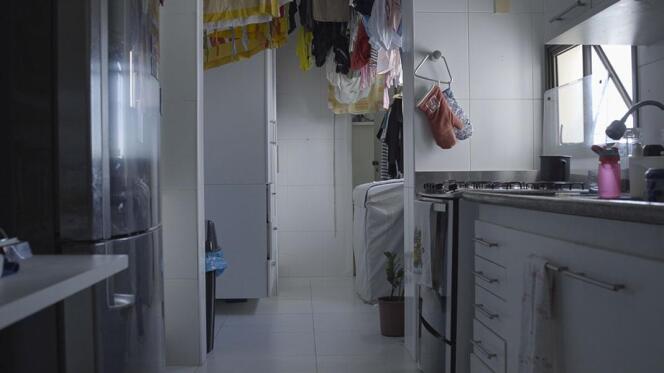The disappearance of Brazil’s maid’s room
MAID #MAID

LETTER FROM RIO DE JANEIRO


A ‘quarto de empregada,’ in an excerpt from video artist Karoline Mai’s documentary ‘Aqui Não Entra Luz,’ released in 2020. CAMILA IZIDIO / CAROL ROCH / KAROLINE MAI
It looks like any other spare room might, with only a few square meters and no windows. Located at the back of the kitchen in the apartment of Francisco “Chico” Bruno De Blasi, the former maid’s room holds an abundance of folders, a computer, a printer, some family photos, a Hulk figurine and a mug from Fluminense Football Club. The latter is Chico’s favorite team, with headquarters located a stone’s throw away in Laranjeiras, south of Rio de Janeiro.
An employee of the Petrobras company, 54-year-old Francisco redesigned this space as an office and spends three days a week telecommuting from it. “This is also where I confined myself when I caught Covid-19!” he said. “Chico” spent a fortnight camping out with a mattress on the floor and looked up at the sky through the skylight in the small attached bathroom. The experience was not a complete turnoff: “I like to withdraw here to read, think and meditate.”
Still, the room hardly represents a neutral or carefree space. On the contrary, it’s more aligned with a history of suffering. In Brazil, it is called the quarto de empregada, or “maid’s quarters.” It is a room that can be found in most middle-class and wealthy homes, where underpaid Black women used to live while serving as maids, often exploited for their work.
‘The “quarto de empregada” is directly descended from the “senzala,” a farm building where slaves were lodged, away from the large house where masters resided’ – Ricardo Trevisan, professor of architecture
“To be honest, I haven’t given much thought to the history of this room. I’ve made it into my own space,” Francisco said. In recent years, the maid’s room has been transformed into offices, storage rooms, dressing rooms, gyms, music studios and even greenhouses for tropical plants. It represents a significant shift for Brazilian homes.
We are interested in your experience using the site.
Send feedback
It is important to consider the symbolic meaning of the space. “The quarto de empregada is directly descended from the senzala, a farm building where slaves were lodged, away from the casa grande, the large house where the masters resided,” said Ricardo Trevisan, professor of architecture at the University of Brasilia, who has written numerous publications on the subject.
“The structure was recreated in the ‘vertical’ apartments during Brazil’s urbanization period,” Trevisan said. A typical example of this sort of room is noisy and stuffy, measures 3-by-6 m2 and is located at the back of a kitchen with its own entrance, a small window and a tiny bathroom. Throughout the 20th century, millions of poor Black Brazilian women were housed in such conditions at the places where they worked, sometimes for their entire lives. They were always at the disposal of their bosses, who occasionally abused them.
You have 57.99% of this article left to read. The rest is for subscribers only.